Dry eye syndrome
Cause

Dry eye syndrome threatening the eye health of modern people
The main causes of dry eye syndrome are dry indoor environments, close-range work using computers and smartphones, and wearing soft contact lenses. In addition, the causes of dry eye syndrome include drying out tears due to the use of air conditioning and heaters, decreased blinking when using computers and smartphones, and reduced tear secretion.
Children and adolescents use many electronic devices such as games, computers, and mobile phones, and excessively expose their eyes to sunlight, causing the muscles around the eyes to stiffen. Especially in children, putting pressure on the eyelids above the eyes causes the tear ducts at the ends of both upper eyelids to become blocked, leading to dry eye syndrome where tears do not come out (dry eye syndrome). This can worsen eyesight.
Furthermore, after the age of 40, decreased tear secretion becomes a cause of dry eye syndrome. Especially for women in menopause, meticulous management is required as tear production decreases due to the decrease in female hormones.
Due to fine dust, yellow dust, and electronic devices, we are currently living in an “eye” emergency era.
As of 2014, it was found that 92% of the world’s population lives in areas where the air pollution levels exceed the limits recommended by the World Health Organization (WHO). Fine dust directly contacts the primary defense barriers of the human body, such as the skin, eyes, nose, or throat mucosa, causing physical irritation and localized inflammatory responses.
– Korea Centers for Disease Control and Prevention | “Health effects of fine dust and patient guidance” page 3


The typical side effect of eye surgeries such as LASIK and cataracts is dry eyes, but the degree is different.
After LASIK/LASEK surgery, dry eye syndrome can occur due to damage to the corneal sensory nerves responsible for regulating tear secretion, which are removed along with the corneal tissue during the laser procedure. This leads to decreased tear secretion and instability of the tear film.
What is fine dust?
Particulate matter floating or blowing down in the air is called dust, and among these, dust with very small particle size is called particulate matter (PM). Fine dust is one of the representative air pollutants. Depending on the particle size, it is divided into fine dust with a diameter of 10㎛ or less (PM10) and fine dust with a diameter of 2.5㎛ or less (PM2.5). Depending on the source, fine dust is divided into artificial sources and natural sources such as yellow dust. The most representative artificial sources are automobile exhaust gases and workplaces (e.g. cement-related industries, metal manufacturing, construction, scrap metal, grain, wood and ore handling facilities). etc.), there is flying dust emitted from the air.
There are various types of substances that fine dust consists of depending on the source, but caution must be taken as it can be more harmful to health if it contains large amounts of heavy metals, sulfur dioxide, nitrogen dioxide, etc. Yellow dust refers to a phenomenon in which dust, mainly found in the deserts of Northern China or Mongolia, rises into the atmosphere, is blown away by westerly winds, and slowly settles. In Korea, yellow dust mainly occurs during the dry spring season, when the concentration of fine dust in the air becomes very high. Recently, as desertification in these areas and industrialization in China have accelerated, yellow dust has become more frequent and fine dust contains many harmful substances, raising public health concerns.
– Korea Centers for Disease Control and Prevention | “Health effects of fine dust and patient guidance” page 2
Fine dust ingredients
Various other causes
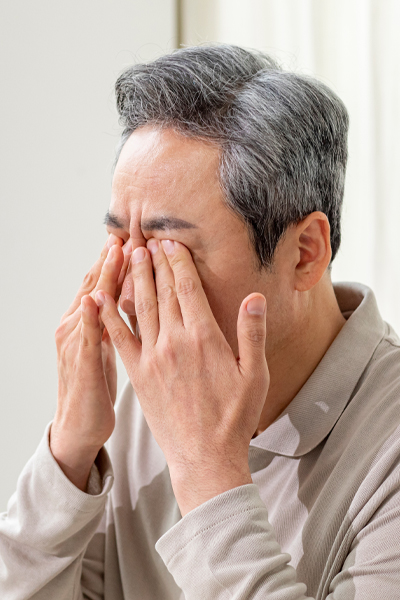
01
Aging
Dry eye syndrome occurs most often in people over 40 years of age. Aging is the most common cause of dry eye syndrome. Due to normal aging, the amount of tear secretion decreases and the state of tears changes.

02
Comorbidities
If you have diseases such as rheumatoid arthritis, Sjögren’s syndrome (a rheumatic disease that causes inflammation or dryness of mucous membranes throughout the body, including the mouth and eyes), lupus, scleroderma, diabetes, and vitamin A deficiency, tear production is reduced.
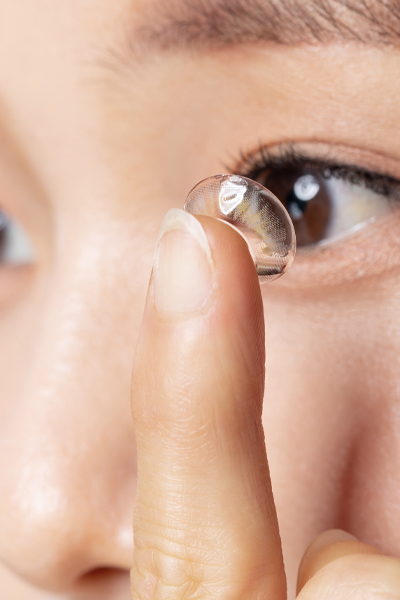
03
Decreased sensitivity of the cornea
Neurotrophic keratitis, which causes numbness of the cornea, or long-term use of contact lenses, which causes numbness of the eye surface, reduces tear production.
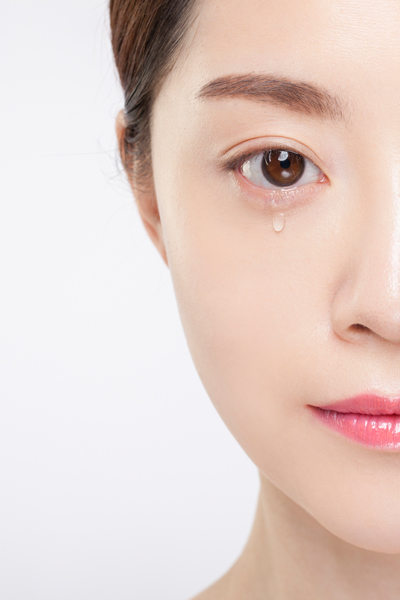
04
Excessive tear evaporation
When the fat secretion glands in the eyelids become inflamed or blocked by germs, fat secretion decreases, and as fat decreases, water-based tears easily evaporate.
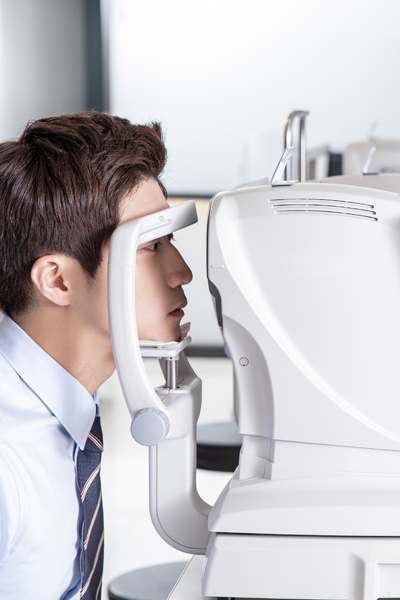
05
Chronic Conjunctitis
When goblet cells, which act as mucus glands in the conjunctiva, are reduced due to chronic inflammation, mucus secretion decreases and moisture cannot be held in the mucus layer, so water-based lacrimal worms soon flow out through the tear duct and into the nose.

06
Thyroid disease
In hyperthyroidism, the eyes may become enlarged and excessive tear evaporation may occur, or tear production may be reduced due to hypothyroidism.
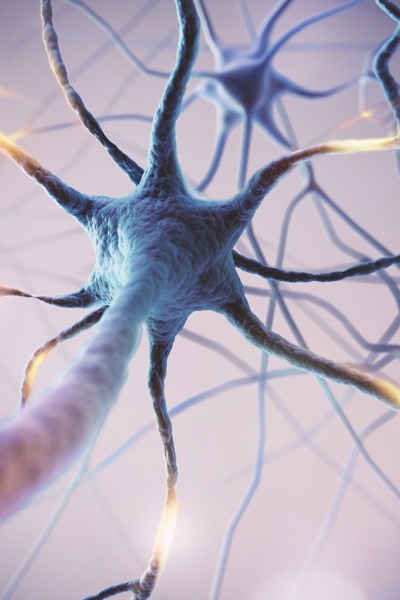
07
Decrease in female hormones
When female hormones decrease during menopause, tear production decreases.

08
Taking medication
Drugs that reduce tear production may cause tears to dry out. These include antibiotics, antihistamines, diuretics, antidiarrheal drugs, parasympathetic nerve blockers such as scopolamine, beta blockers for treating high blood pressure, sleeping pills, birth control pills, some acne treatments, some antidepressants, and some anesthetics.

09
Environmental factors
Dry eyes are likely to occur if the surrounding environment is dry, if the eyes are irritated by smoke, dust, sunlight, wind, etc., or if the number of eye blinks decreases unconsciously while reading or using the computer.

10
Chronic fatigue
Chronic fatigue, social stress, and hormonal changes due to nutritional imbalance can also cause dry eyes.

01
Aging
Dry eye syndrome occurs most often in people over 40 years of age. Aging is the most common cause of dry eye syndrome. Due to normal aging, the amount of tear secretion decreases and the state of tears changes.

02
Comorbidities
If you have diseases such as rheumatoid arthritis, Sjögren’s syndrome (a rheumatic disease that causes inflammation or dryness of mucous membranes throughout the body, including the mouth and eyes), lupus, scleroderma, diabetes, and vitamin A deficiency, tear production is reduced.

03
Decreased sensitivity of the cornea
Neurotrophic keratitis, which causes numbness of the cornea, or long-term use of contact lenses, which causes numbness of the eye surface, reduces tear production.

04
Excessive tear evaporation
When the fat secretion glands in the eyelids become inflamed or blocked by germs, fat secretion decreases, and as fat decreases, water-based tears easily evaporate.

05
Chronic Conjunctitis
When goblet cells, which act as mucus glands in the conjunctiva, are reduced due to chronic inflammation, mucus secretion decreases and moisture cannot be held in the mucus layer, so water-based lacrimal worms soon flow out through the tear duct and into the nose.

06
Thyroid disease
In hyperthyroidism, the eyes may become enlarged and excessive tear evaporation may occur, or tear production may be reduced due to hypothyroidism.

07
Decrease in female hormones
When female hormones decrease during menopause, tear production decreases.

08
Taking medication
Drugs that reduce tear production may cause tears to dry out. These include antibiotics, antihistamines, diuretics, antidiarrheal drugs, parasympathetic nerve blockers such as scopolamine, beta blockers for treating high blood pressure, sleeping pills, birth control pills, some acne treatments, some antidepressants, and some anesthetics.

09
Environmental factors
Dry eyes are likely to occur if the surrounding environment is dry, if the eyes are irritated by smoke, dust, sunlight, wind, etc., or if the number of eye blinks decreases unconsciously while reading or using the computer.

10
Chronic fatigue
Chronic fatigue, social stress, and hormonal changes due to nutritional imbalance can also cause dry eyes.


